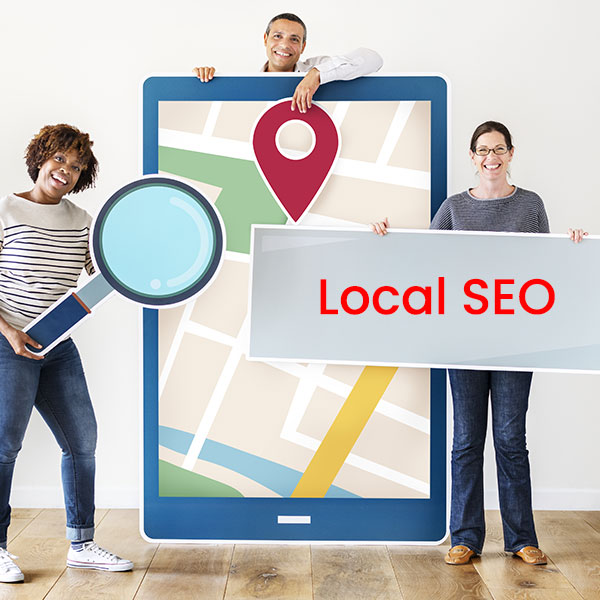
Assisted Living SEO
Assisted living SEO is a specialized branch of SEO (Search Engine Optimization) that is dedicated to getting your assisted living facility or service showing up consistently in search engine results pages (SERPs).
Although the basic SEO concepts used for business is the same, assisted living SEO has its own share of things to look out for.
Targeting specific keywords
Assisted living SEO: What not to do
Assisted living SEO requires a well-thought-out keyword strategy specific to assisted living. For instance, phrases like “assisted living facilities,” “senior care,” “memory care” and “retirement homes” are common in search queries of this industry.
When it comes to assisted living facilities, SEO plans should be narrowed down to finding and targeting these keywords to boost their trust factor on search engines.
If you don’t yet have one, make a keyword map and start working on it to target your key words as well.
What is Keyword Mapping?
Keyword mapping is the process of attributing keywords to specific pages on a website. It’s more about strategically mapping target keywords to user intent, and then aligning them to relevant content, in order to improve search rankings, and click through and conversion rates.
What are the stages of keyword mapping for assisted living SEO?
Keyword Research: Find your focus keywords, either through Google Keyword Planner, Ahrefs or SEMrush. Include variations such as:
Primary Keywords: What page is really about (Ex: “Venice FL assisted living”).
Secondary Keywords: Alternate Definitions or long-tail variations (e.g., “best assisted living communities in Venice FL”).
Audit Current Content: You should perform a site audit to find out which pages you are getting ranked on your site for certain keywords.
Keyword gap and content optimization:
Discover gaps and unlock opportunities when targeting a keyword.
Map keywords to pages: Specify on-page keywords according to relevance and intent:
Homepage: Broad, high volume keywords (Ex: You’ll notice below in our example that a product keyword is sent to a homepage in many industries such as “Deionized Water SystemsVenice FL”).
Service Pages: Individual keywords about the service (ie, “reverse osmosis Venice FL”).
Blog Posts: Long-tail or question-based keywords (e.g., “how to improve water quality in Venice FL”).
Craft or Optimize content: Pages are optimized, The target words we target for are in titles, headers, meta tags and body content, while not violating the natural flow and stuffing with keywords.
Track and Adjust: Analyze keyword performance with one or more analytics tools, and adjust your keyword mapping or content based on search patterns and performance metrics.
Advantages of Keyword Mapping for Assisted Living SEO
Boosts SEO Ratings: Helps search engines understand what pages to rank for key words.
Improves User Experience: Users will see the most relevant content for their search query.
Keeps Away from Keywords Cannibalization: it is when various pages of the website are fighting to rank for the same keyword.
Drives Traffic and Conversions: Reaches the right viewers with rich content.

Assisted Living SEO:
Understanding the target audience
Seniors and their adult children are often targeted by assisted living facilities.
Those searching for an assisted living facility may not be going into the internet to look for it.
That means producing informative, succinct and useful content for this audience.
When people are trying to find information on assisted living facilities, there is one thing that they are typically looking for: information that can help them make a decision as to where to place their loved ones.
As such, the information on an assisted living facility’s website should be not only informative, but also informative and educational.
Below is a list of the types of assisted living website content you should at least consider including for your site.
Facility information
Describe the facility including the level of care/services offered, size and layout of facility, staff qualifications and experience and both the policy and procedures of the facility.
Photo and video tours
Offer photo and video tours of the facility, so potential residents and their loved ones can see what the facility looks like and what your everyday life would be if you were to live in the facility.
Testimonials and reviews
Attach current and former resident and family testimonials and reviews. This can give potential residents and their families a sense of what it’s like to live in the facility and how satisfied others have been with the care and services provided.
FAQs
Add a frequently asked questions (FAQ) section that will handle questions and concerns potential residents and their families might encounter.
Blog posts
Share insightful, educational blog posts that answer common questions and concerns relating to assistive living, such as how to select an assisted living community, how to pay for assisted living, and how to care for common elderly health issues.
Resources Section
Include a section fo links to resources, resources such as government sites, organizations for senior citizens, support organizations related to health conditions that impact senior citizens.
Contact information
Offer an easy way for prospective residents and their families to reach the facility for inquiries or to book a tour or appointment. Put phone numbers, email addresses and online contact forms on the website.

Assisted Living SEO:
Local SEO
Local SEO forms an integral part of assisted living SEO as well.
Many families who are seeking assisted living facilities are looking for a place in their own local area. That’s why it’s important for assisted living communities to leverage their website and Google My Business listing to be found in local search.
Use Your Google Business Profile
If any of your family member or you might be facing an assisted living problem, you can simply find an assisted living facility here.
What’s the GMB listing? The GMB listing is a free listing on Google where businesses can fill out business information like hours, address, phone number, and reviews.
To maximize the GMB listing, senior living communities should make sure that all details are correct and current, and they have claimed and verified the listing. They should also include photos and videos of the facility and share updates, events and promotions on the listing regularly.
Local keyword optimization
If you have a residential care business, then your website should also include local keywords as much as possible. This can mean the name of the city and locality features heavily in website copy, blog posts, meta descriptions, and so on. They must also feature local keywords in site URLs and image alt text.
Local link building
When we speak of “local” link building, what we mean is link building to your website from other local sites.
Let’s name these local links such as sponsoring local events, guest posting on local blogs, and get listed in local directories for assisted living facilities to become part of their community.
Encourage client reviews
Customer reviews rank high in local SEO as well. Assisted living centers should encourage their residents to leave a review at their Google My Business entry, as well as on similar review websites like Yelp and Facebook. They should be replying to all reviews, both good and bad, so this shows they are active and appreciate engaging with their customers.
Local SMO
For assisted living facilities, their social media profiles should be maximized with local keywords and consistently updated across all channels.
They should also share updates, events and promotions on social media to reach like-minded people in their local area.
Content Writing for Assisted Living SEO in Your Area
Local Content for Assisted Living Facilities Assisted living facilities can generate content such as blog posts, infographics, videos, etc. specifically for the local market. This can help position them as a local leader in their field and enhance visibility in local SERPs.

Assisted Living SEO:
Content Marketing
Assisted living SEO relies heavily on content marketing and is the foundation for finding and informing new residents as well as their families.
Through the development and distribution of useful, meaningful, and informational content, the managers of assisted living SEO can deal with the queries and apprehensions of the targeted audience members and gain trust and reliability as well.
Articles, videos, and other content that covers areas such as “Selecting the Right Assisted Living Community” or “Advantages of Memory Care Living” serve more than just as reader-friendly information, they also tell search engines that your site is a go-to site for information.
This can help to boost search rankings for relevant terms.
And content marketing can boost local SEO too, adding location-based keywords, so the facility shows up in searches such as “assisted living near me” or “senior care in [city].
A facility is given a more personal feel with visual content like virtual tours and resident testimonials, which can make the facility more attractive to a potential resident.
Virtual Tours
What: Interactive 360 degree virtual tours or video walkthroughs of the buildings.
Why: Provides families with an accurate picture of the living spaces, amenities and campus vibe without traveling to see for themselves.
SEO Benefit: Increases time spent on site (or, dwell time) and can contain keywords in the captions and descriptions.
Resident Testimonials
What: Footage or photos of residents expressing their positive experiences or what they have to say about the experience, along with quotes or stories.
Why: Helps establish trust by humanizing the home, making it relatable for prospective residents and families.
SEO Benefit: It encourages engagement, and keyword-optimized video descriptions or alt text can increase search visibility.
Staff Spotlights
What: Brief videos or pictures of key staff members sharing a bit about themselves, including what they do, their experience and overall caring approach.
Why: It lends a personal aspect to the facility, and demonstrates the team’s skills and empathy.
SEO Bonus: Pair with a blog post or service page for enriched content.
Event Highlights
What: Photos/videos of community activities, events, celebrations or recreational activities taking place at the facility.
Why: Shows a lively, engaging scene for residents, ideal for families seeking an active community.
SEO Benefit: Contributes to local SEO to signal the facility’s commitment to the community, and posts can be tagged with location-based keywords.
Infographics
What: Eye-catching graphics that unpack complex subjects, including:
“Steps to Transitioning to Assisted Living.”
“Assisted Living Costs vs. In-Home Care.”
Why: It’s an easy way to unpack what is/should be important information for the reader.
SEO Value: Draws backlinks, and makes it more shareable on social.
Facility Amenities Showcase
What: High-quality photos or videos of features such as gardens, dining rooms, fitness facilities and private rooms.
Why: It shows what’s special and fun about the facility.
SEO Benefit: Sends traffic to keyword-targeted service pages.
Educational Videos
What: Brief, educational videos on subjects such as:
“What to Look for in an Assisted Living Community.”
“The Benefits of Memory Care 101.”
Why: Establishes the facility as an expert on senior care.
SEO Benefit: Videos appear in search and attract visitors to your site.
FAQs in Video Format
What: Brief videos responding to frequently asked questions about assisted living.
Why: Offers easily digestible, relatable responses to what new clients are thinking.
SEO Benefit: Increases user engagement and can be used on FAQ pages for improved search rankings.
Publishing quality, optimized content on a regular basis, also increases organic traffic, engagement, and inspires visitors to delve deeper into the site causing more inquiries and conversions.
In the end, great content marketing isn’t just brown stairs, it’s also the one thing that makes the facility the leader of the pack in senior care.

Assisted Living SEO:
Opt-In Forms
Families evaluating assisted living facilities frequently turn to ratings written by other families who have tried the facilities. It is therefore critical for assisted living facilities to track and control their online reputation by proactively asking for and responding to reviews.
Here are a few reputation management strategies assisted living facilities can implement to enhance their assisted living SEO efforts:
Monitor online reviews
Nursing homes should be attentive to online reviews on sites like Google My Business, Yelp and Facebook. They must reply to all reviews, good, bad, or otherwise, in a timely and professional manner.
This Information says to its clients that the establishment knows what is being said about them on review sites and its not scared to interact with its clients.
Encourage positive reviews
It’s all about the positive review: Assisted-living providers must absolutely ask their satisfied customers to do the same. They might do this by sending follow-up emails or surveys following a resident’s stay, or by providing incentives to leave a review.
Address negative reviews
If a negative review is left, it’s necessary to fulfil all addressed complaints from the reviewer.
Assisted living SEO campaign leaders should respond to negative reviews with a collected professionalism, and ask the reviewer if they’d like to discuss and resolve issues or problems they may have had.
Enact quality improvement initiatives
Online reviews highlight quality improvement initiatives that assisted living facilities should consider adopting. If several reviews complain about the food, then perhaps they need to reconsider their menu, or the chef.
Showcase positive feedback
Log a good review on the website Log a favourable review on the assisted living facility website and social media platform if possible. This can be by implementing a testimonials page on their website or publishing positive feedback on social media.
Deal with fake or misleading reviews
When a Campaign Manager for Assisted Living SEO spots a fake review call it out by flagging the review at the website which it has been posted to. There is some legitimacy, there’s a lot of review sites that have rules against false reviews, and they will remove them if you report them.
“Managing” reputation implies proactive, customer-centric strategy.
Reputation management involves keeping tabs on and responding to online reviews, introducing quality improvement initiatives and sharing the positive feedback, and assisted living centers that do so at the local level can gain an outstanding online reputation that will help attract new residents and keep the ones they have.
Although the fundamentals of SEO are the same for any type of business, assisted living SEO is special and you need to consider certain considerations due to the unique nature of the senior living industry and the audience you are targeting.

Assisted Living SEO:
Reputation management
Reputation management is an important component of assisted living SEO.
Families considering assisted living facilities often read reviews from other families who have used the facilities. Therefore, it is important for assisted living facilities to monitor and manage their online reputation by actively soliciting reviews and responding to any negative feedback.
Here are some reputation management tactics that assisted living facilities can use to improve their assisted living SEO campaigns:
Monitor online reviews
Assisted living facilities should monitor online reviews on websites such as Google My Business, Yelp, and Facebook. They should respond to all reviews, both positive and negative, in a timely and professional manner. Responding to reviews shows that the facility is engaged with its customers and values their feedback.
Encourage positive reviews
Assisted living facilities should encourage their satisfied customers to leave positive reviews. They can do this by sending follow-up emails or surveys after a resident’s stay or by offering incentives for leaving a review.
Address negative reviews
When a negative review is posted, it is important to address the concerns raised by the reviewer. Assisted living SEO campaign managers should respond to negative reviews in a calm and professional manner and offer to resolve any issues or concerns raised by the reviewer.
Implement quality improvement measures
Assisted living facilities should implement quality improvement measures based on feedback received in online reviews. For example, if multiple reviews mention that the food is not up to par, the facility may need to reconsider its menu or bring in a new chef.
Showcase positive feedback
Assisted living facilities should showcase positive feedback on their website and social media channels. They can do this by creating a testimonial page on their website or sharing positive reviews on social media.
Address false or misleading reviews
If an assisted living SEO campaign manager identifies a false or misleading review, they should report it to the website where the review is posted. Some websites have policies against false reviews and will remove them if they are reported.
Reputation management requires a proactive and customer-centric approach.
By monitoring and responding to online reviews, implementing quality improvement measures, and showcasing positive feedback, assisted living facilities can build a strong online reputation that will attract new customers and retain existing ones.
While the basic principles of SEO remain the same for all businesses, assisted living SEO requires a specialized approach that considers the unique characteristics of the senior living industry and its target audience.